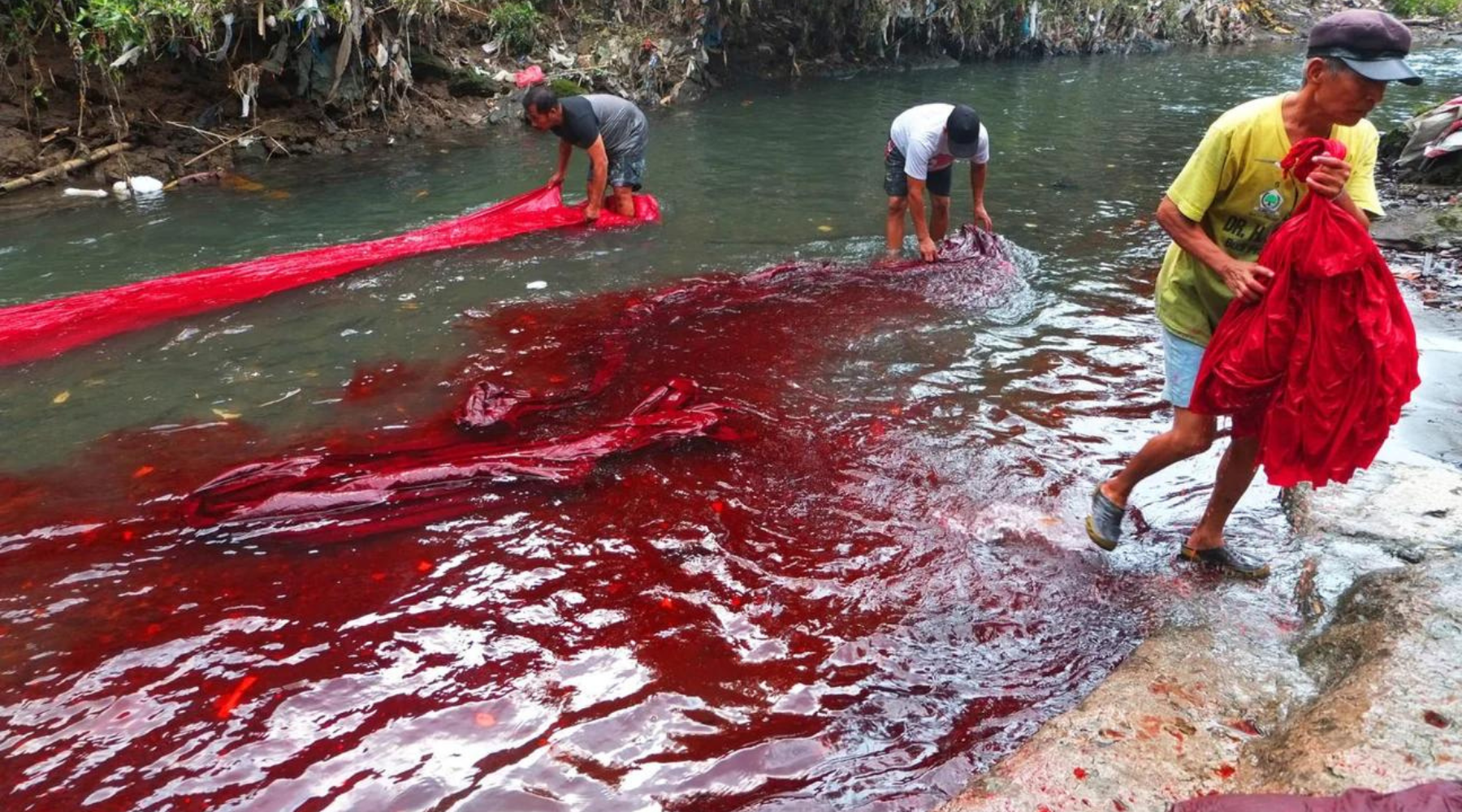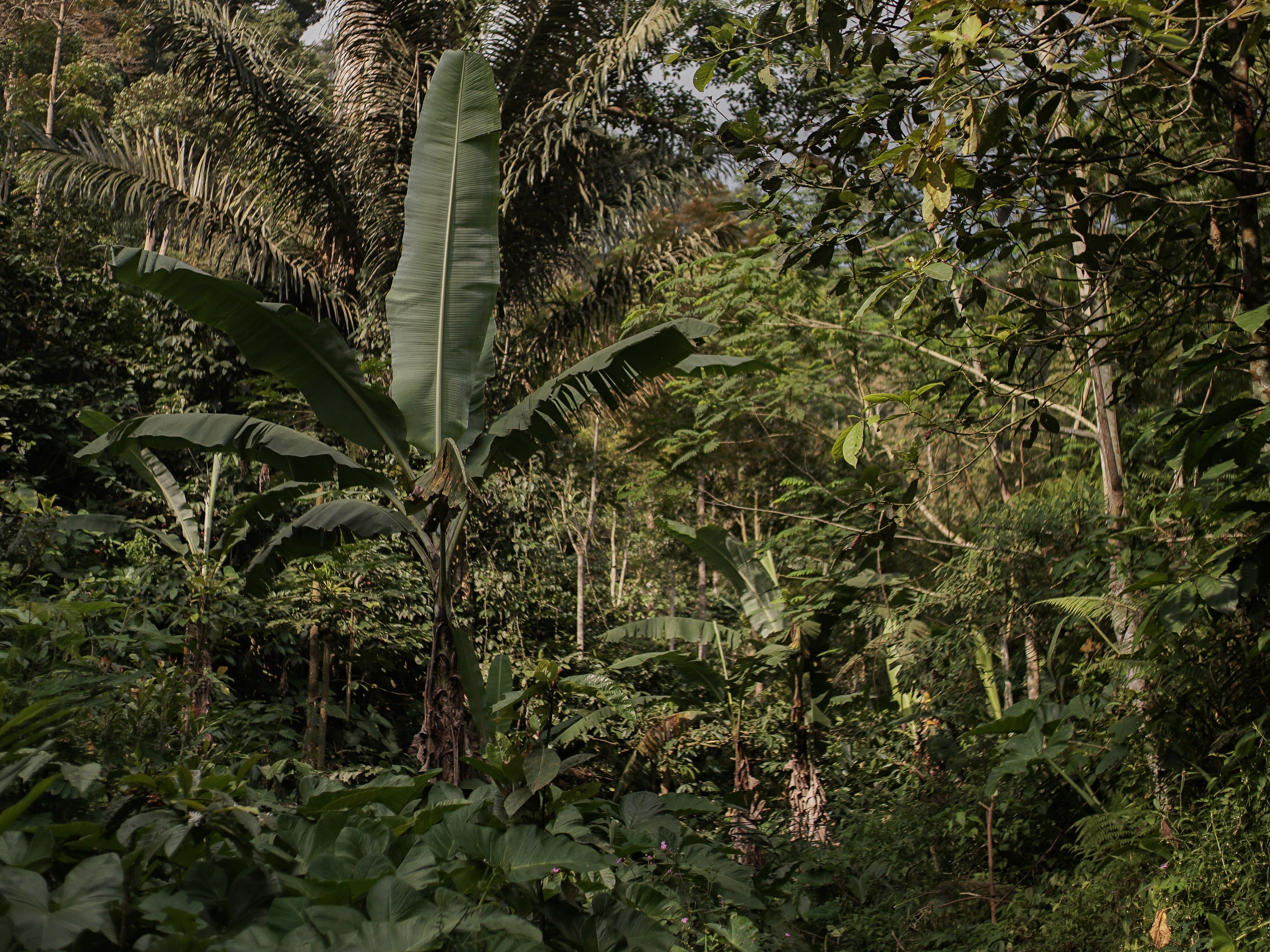
Rivers have been major drivers of human civilisation. It’s where tribes would settle and thrive – fishing, trading and cultivating the fertile land, nourished by nutrients carried in the rivers’ waters. It’s the same story – from Egypt and Mesopotamia to the ancient Indus Culture in India.
But unfortunately, we also very quickly started to pollute them, dumping whatever we didn’t need anymore to be washed away. Out of sight, out of mind.
Yet as Annie Leonard famously said: There is no such thing as away. Because whatever we throw away must go somewhere.
Unfortunately, to this day, many of the worlds’ rivers are heavily polluted. And fashion has a lot to do with that.
It’s a serious issue because it’s not just because of the immediate destruction of the environment.
Whatever enters our rivers has a tendency to find its way back to us – from the water we drink to the food we eat.
Fashion and Water Pollution
Fashion contributes to global water pollution in three main ways:
(1) Runoff from fertilisers for cotton production
Cotton is often grown in monocultures which require a great amount of pesticides and fertilisers. In fact, it's one of the most chemical intensive crops worldwide. 16% of all insecticides produced globally are used on cotton for example
And most of these chemicals don't end up on the plants. They seeps into rivers and groundwater – as something called runoff. This usually causes algae overgrowth in nearby waters as well as dead zones in the ocean. The recent massive dying of fish in Spain was an example of this.
(2) Water Pollution from Textile Dyeing
Fashion uses a staggering 93 billion cubic meters of water — enough to meet the consumption needs of five million people. Or to fill 35 million Olympic size swimming pools. Even Michael Phelps wouldn’t be able to swim through all that in his lifetime.
72 toxic chemicals have been identified in water solely from textile dyeing, 30 of which cannot be removed.
Most of this water is used for bringing color to your clothes, more often than not using highly toxic AZO dyes that have been linked with cancers, among other health risks. Add in other chemicals used to make your clothes easy iron, keep mites at bay or just make them look brighter and you end up with a highly toxic cocktail.
The worst part? The Worldbank estimates that 80-90% of fashion’s wastewater is never treated. It just flows right into our rivers.
(3) Plastic Pollution
And finally of course there are microplastics. As we mentioned before, synthetic fibers like polyester and nylon release thousands of tiny plastic particles into the environment with every wash.
Annually the equivalent of 50 billion plastic bottles is washed into our rivers and oceans this way – where they become part of the food chain: These plastics literally accumulate in fish along with all their toxins. Before they end up on our plates.
Why should you care?
It’s not unlikely that a lot of these chemicals have made it into your body. Because the same rivers are often used as a source of drinking water and irrigation for food crops.
But even if you’re far away from those textile factories, you’re not safe. Our skin is our biggest organ – and whether we feel it or not, it interacts with its environment.
Repeated studies have shown that some of the chemicals used in fashion today can be absorbed into our blood stream by just wearing fast fashion pieces. And not all of them just disappear with the first wash.
Poisoning the poor
If scientists can detect chemicals found on kids’ PJs in their urine after just a couple of wears, imagine the kind of exposure the millions of men and women have that work in the fashion industry?
On top of being far from earning a living wage, they’re poisoned with thousands of chemicals – giving them and their children rashes, cancers, neurological conditions and other diseases they can’t afford to treat.
By bringing color into our closets, fast fashion is poisoning the poorest of the poor, our planet and you.
Which brings us the question:
What can you do to be part of the solution?
Here are five things everyone can do to contribute to cleaner rivers and a safer environment for all of us:
- Hold your favorite brands accountable: Ask your favorite brands and retailers tough questions. What dyes do they use for their clothes? How do they make sure no dangerous chemicals are used in manufacturing and how to they treat waste water? Just send them a quick DM on Instagram.
- Opt for natural, minimally processed materials: Polyester, today's most popular fibre, has been associated with higher levels of toxins than other materials. So whenever possible, opt for natural, minimally processed fibres.
- Buy from brands with transparent, ethical practices that take active steps to eradicate chemicals from their supply chain. For the planet, but also for you.
- Use your clothes longer, pass them on and/ or buy from second-hand places – to reduce the need for textile production.
- If you buy new clothes - especially fast fashion items - make sure to wash them before the first wear. It does not necessary get rid of all harmful chemicals but it helps.
No Circularity with Toxic Chemicals
For me, this issue shows that we can no longer see ourselves as separate from the environment. Whatever we do to the planet, we eventually do to ourselves. If we keep destroying it, we lay the foundation for our own demise. If we keep polluting it, we eventually poison ourselves.
And it casts doubt over the industry’s lofty goal to introduce circularity: IKEA and H&M recently disclosed research showing that 1 in 5 fabrics in the recycling system showed dangerous levels of heavy metals and other toxic chemicals.
You cannot create a system in which products are endlessly recycled if they have dangerous substances in them that won’t break down.
To become truly circular and sustainable, fashion will have to break through its addiction to chemicals – for the sake of its workers, our planet and the health of all of us.




